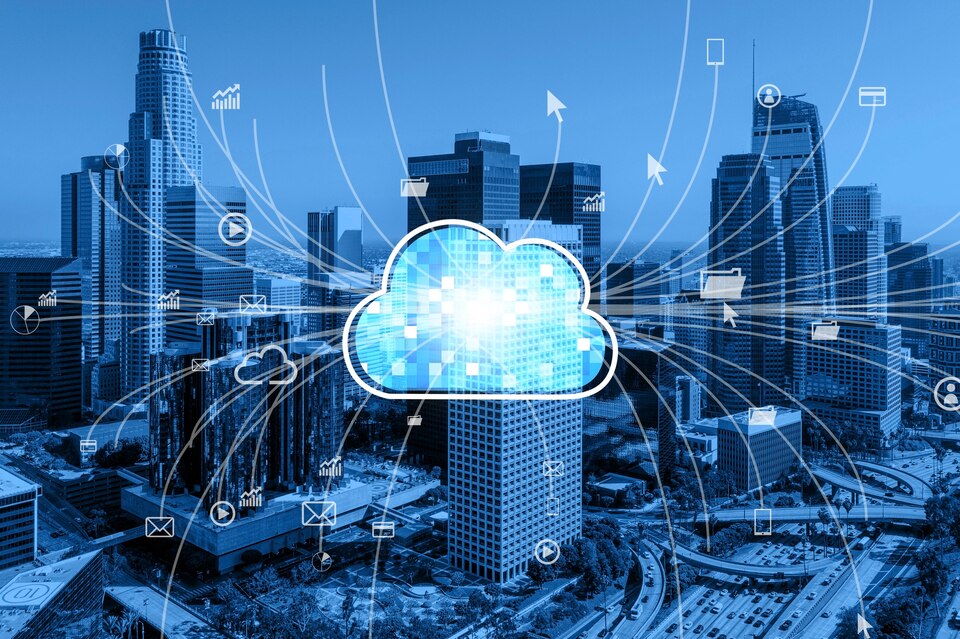Understand how cloud computing is evolving, including edge computing, hybrid cloud strategies, and how businesses are leveraging the cloud.
Cloud computing has become the backbone of digital transformation in 2025. With the rise of remote work, digital services, and scalable infrastructure, businesses are relying on cloud technologies more than ever. But today’s cloud is not what it was five years ago. It’s faster, more secure, and increasingly decentralized. In this blog, we’ll explore the latest cloud computing trends in 2025 and what they mean for companies and individuals alike.

1. Edge Computing Goes Mainstream
One of the most significant trends in 2025 is the rise of edge computing—processing data closer to where it’s generated rather than in centralized cloud servers.
Benefits:
- Reduced latency for real-time applications
- Lower bandwidth consumption
- Enhanced security and privacy
Industries like autonomous vehicles, healthcare, and manufacturing are benefiting immensely from edge devices powered by AI and 5G.
2. Hybrid and Multi-Cloud Strategies Dominate
Companies no longer rely on a single cloud provider. Hybrid (mix of public and private clouds) and multi-cloud (use of multiple cloud vendors) approaches offer flexibility, cost efficiency, and risk reduction.
Top Reasons for Adopting Hybrid Cloud:
- Avoid vendor lock-in
- Better data sovereignty compliance
- Customizable performance for various workloads
Platforms like Microsoft Azure Arc, Google Anthos, and Amazon Outposts make managing diverse environments easier than ever.
3. Serverless Architecture Expansion
In 2025, serverless computing is empowering developers to focus purely on code rather than infrastructure. Cloud providers automatically allocate resources and scale up or down based on demand.
Popular Use Cases:
- Event-driven apps
- Chatbots
- Real-time file processing
This model reduces costs and time-to-market, making it ideal for startups and agile teams.
4. AI and ML Integration in Cloud Platforms
Leading cloud providers now embed AI and machine learning tools directly into their ecosystems. AWS SageMaker, Azure Machine Learning, and Google Vertex AI allow businesses to:
- Build intelligent applications
- Automate operations
- Gain deep insights from big data
5. Sustainability Becomes a Key Metric
As global pressure mounts to combat climate change, cloud providers are investing in green energy and carbon-neutral operations.
Examples:
- Google Cloud is operating on 100% renewable energy
- Microsoft aims to be carbon negative by 2030
- Amazon is investing in solar and wind projects globally
Enterprises now consider environmental impact as part of vendor selection.
6. Quantum Computing Enters the Cloud
Though still in early stages, quantum computing is making its way to cloud platforms. IBM, Google, and Amazon offer quantum-as-a-service (QaaS), giving researchers and enterprises access to next-gen computation without owning quantum hardware.
Potential Benefits:
- Drug discovery
- Cryptography
- Complex simulations
7. Cloud Security and Compliance Automation
Security is a top concern in cloud adoption. In 2025, automated compliance tools and AI-driven security services are helping businesses stay safe and meet regulations like GDPR, HIPAA, and CCPA.
Key Innovations:
- Zero-trust architecture
- AI-driven threat detection
- Encryption-as-a-service
8. Industry-Specific Cloud Solutions
Vertical clouds tailored for specific industries (e.g., FinTech Cloud, Health Cloud, EdTech Cloud) are booming. These offer specialized tools, compliance frameworks, and AI models optimized for industry needs.
![]()
How to Stay Ahead with Cloud in 2025
To remain competitive:
- Continuously upskill on cloud-native tools
- Monitor your carbon footprint in the cloud
- Stay agile by adopting modular, microservice-based architectures
- Use DevOps and CI/CD practices to automate deployments
Conclusion
Cloud computing in 2025 is not just a hosting solution—it’s a dynamic engine for innovation. From edge and hybrid cloud to serverless and quantum computing, the trends show a future where cloud is decentralized, intelligent, and green. Businesses that embrace these changes will not only boost efficiency but also gain a competitive edge in the digital economy.

